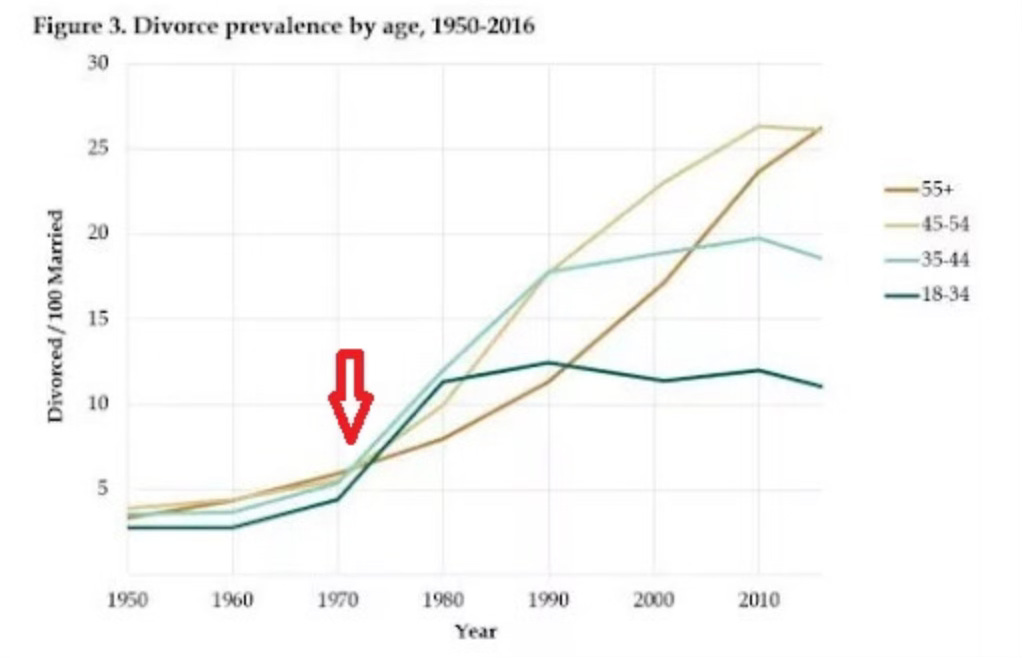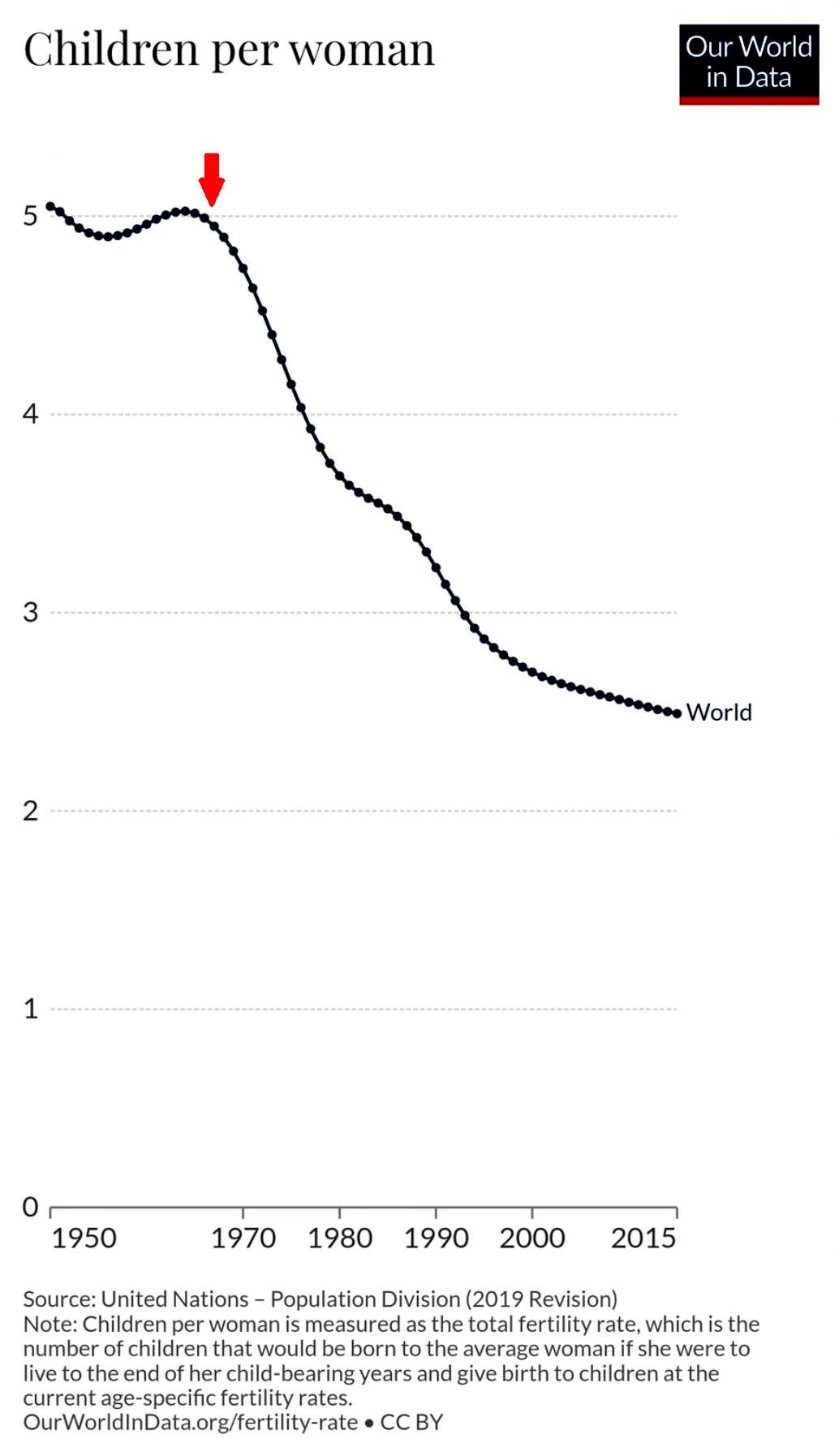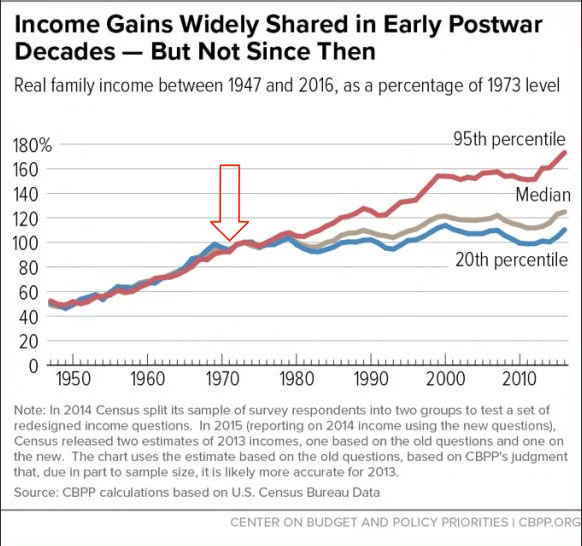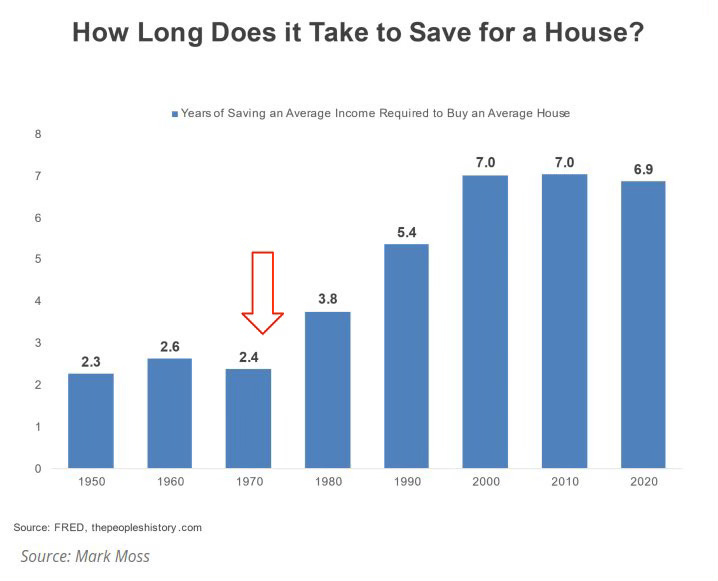The crisis of faith: is it this simple?
On broken money and the Nones
My journey back to the Catholic Church accelerated in 2020 when I discovered Bitcoin. This gift inspired a thesis on how to fix the crisis of faith not often talked about in Catholic circles. Here’s the idea and my story.
If you haven’t met one, Bitcoiners love to respond to worsening problems with, “Yeah, that’s because the money is broken.”
Groceries getting more expensive? “That’s the money.”
Divorce rate skyrocketing? “Yeah, money is really broken.”
I was making breakfast one morning in 2022 when podcast Bishop Barron tells me of the rise of the Nones:
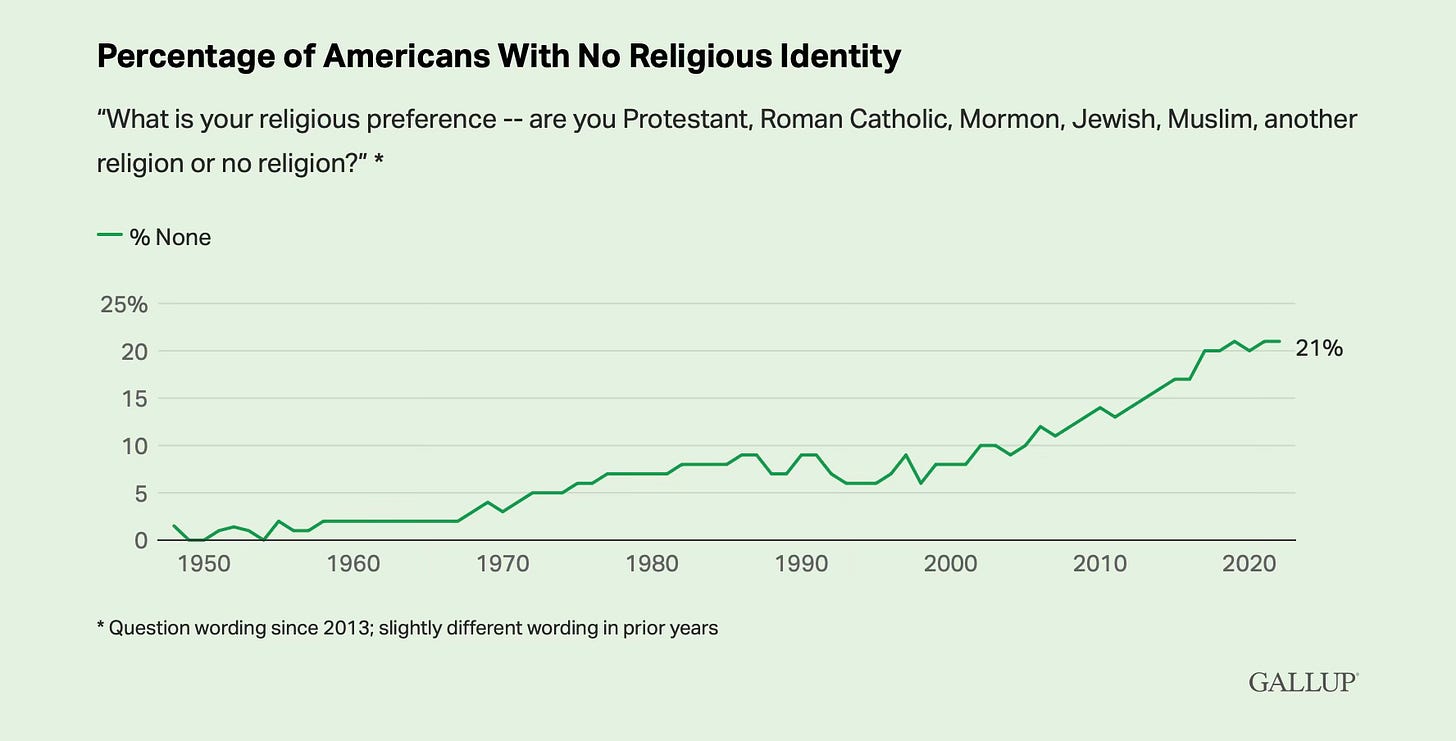
“The money’s broken.”
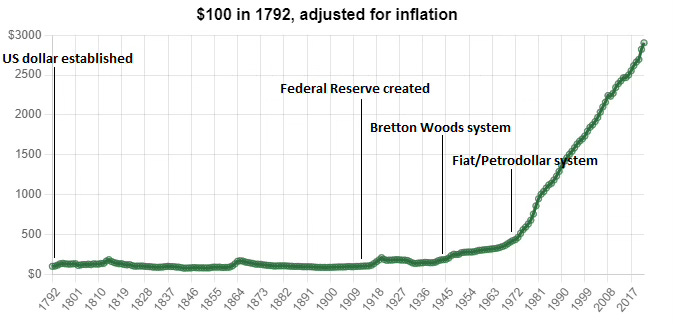
I was too new to my faith to share widely.
Now’s different, though.
Is Bitcoin a gift to help fix the crisis of faith?
I think so.
My faith and Bitcoin background
A bit on me quickly:
I was baptized in the 90s. Confirmed in the 2000s. But I had slowly become a None in the 2010s.
My attendance at Mass not even on Christmas and Easter by the end of the decade.
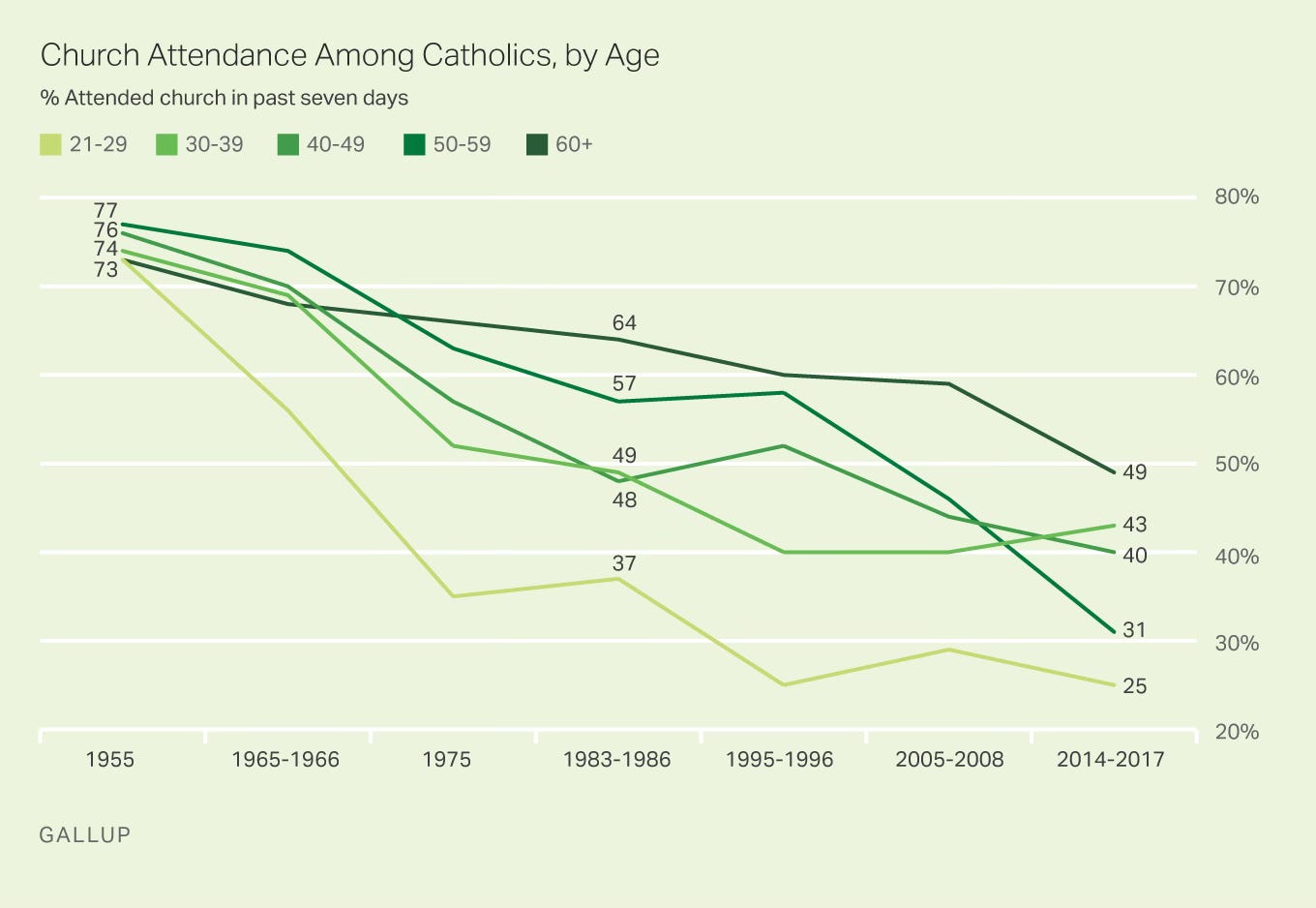
In April 2020, shortly after being let go from my job, on a podcast walk in a locked down Toronto, the Bitcoin mission clicked.
The Bitcoiner thesis
Bitcoiners believe the world began to decline in the early 20th century with the proliferation of central banks globally. It wasn’t perfect before then, but things seemed to change for the worse from then.
Morally, culturally, economically, politically… Why the increase in decrease? We changed the structure of money, mostly so that it is easy to create more of it, which causes its value to decrease if we do decide to create more of it (we did). And in 1944 and most gravely in 1971, we poured fuel on the accelerating fire. You’ll learn about 1971 below; you can learn about 1944 in our course.
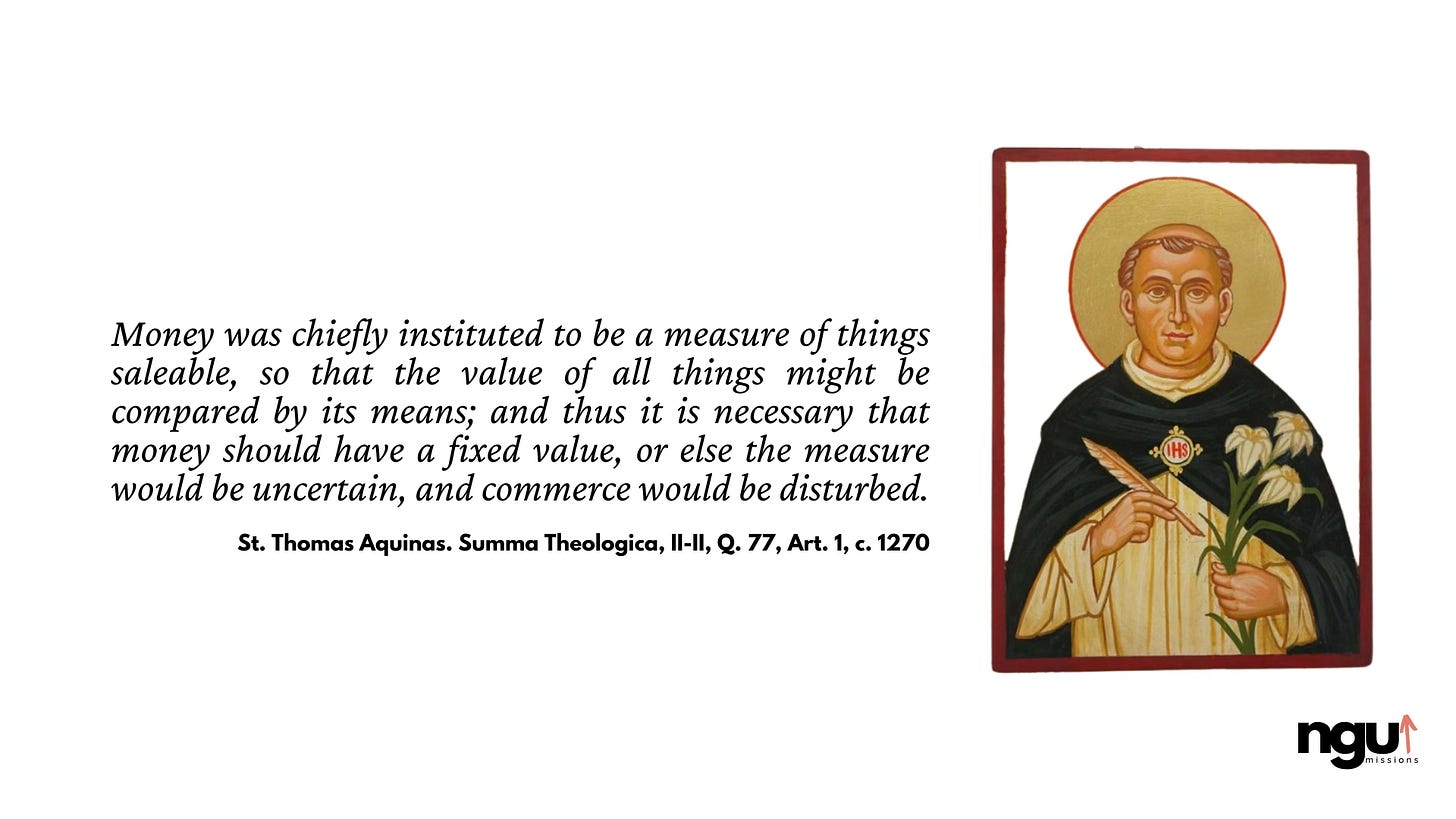
In 1971, the President of the United States said “no more gold” in our money system. For centuries prior, money’s value was related to how much gold a society had saved. It was hard to make or find gold, so you couldn’t create more money. But no longer did this tie-to-reality exist after 1971, allowing Central Banks to create money as folks in power decided was necessary, often to fund government programs or stabilize an economy in crisis. This new system is called unbacked fiat currency, and we’re living with it today. Here’s the growth in US dollars in existence since:
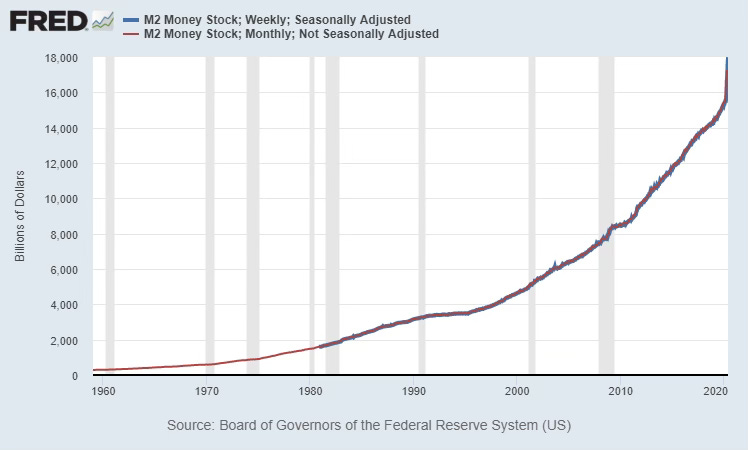
“Broad money supply, M2, refers to all of the various bank deposits for people and businesses that exist in the system, like checking accounts and savings accounts, as well as physical currency in circulation.” —Lyn Alden
This increase in US dollars helped cause US dollar prices to rise. Below, the blue line is a measure of cost of living for buyers, and the red line is a measure of cost of business for sellers:
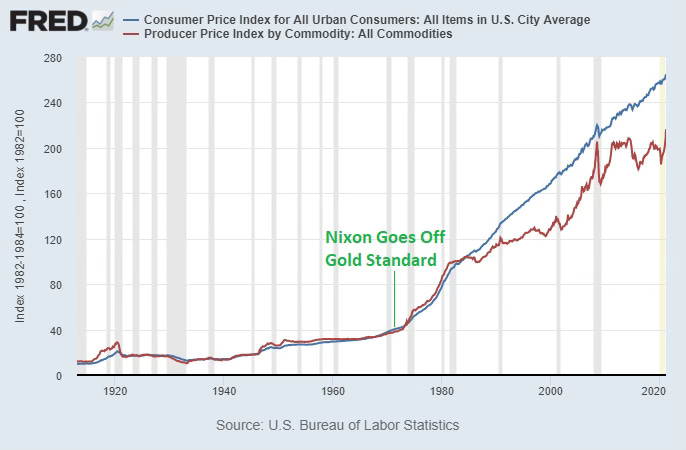
Correlations or consequences?
To shortcut explaining the connection between “printing money” and divorce rates, a Bitcoiner might reference this website of alarming trends since 1971. “Look at all of these correlations!”
Divorce rate:
An increase from around 5% in 1970 to 10-25% four decades later. That’s from one in twenty couples, to one in four.
Fertility rate:
Families with five children were common in 1970. In 2015, two or three was the average globally.
Income inequality:
The rich got richer since 1970, in terms of “real family income”. The lower income brackets have mostly stayed the same since in terms of how much their earnings can afford them.
Cost of housing:
Buying a house in 1970 required 2.4 years of saving for one person in the United States to do so! In 2020? Almost seven years.
Adding charts about faith
There aren’t any charts on that site about the crisis of faith, though. There’s the one at the top of the article, depicting an increase in the percentage of Americans with no religious identity. Here’s another one depicting the decline of “church membership”.
70% in the 70s. 45% in the 2020s. Rough.
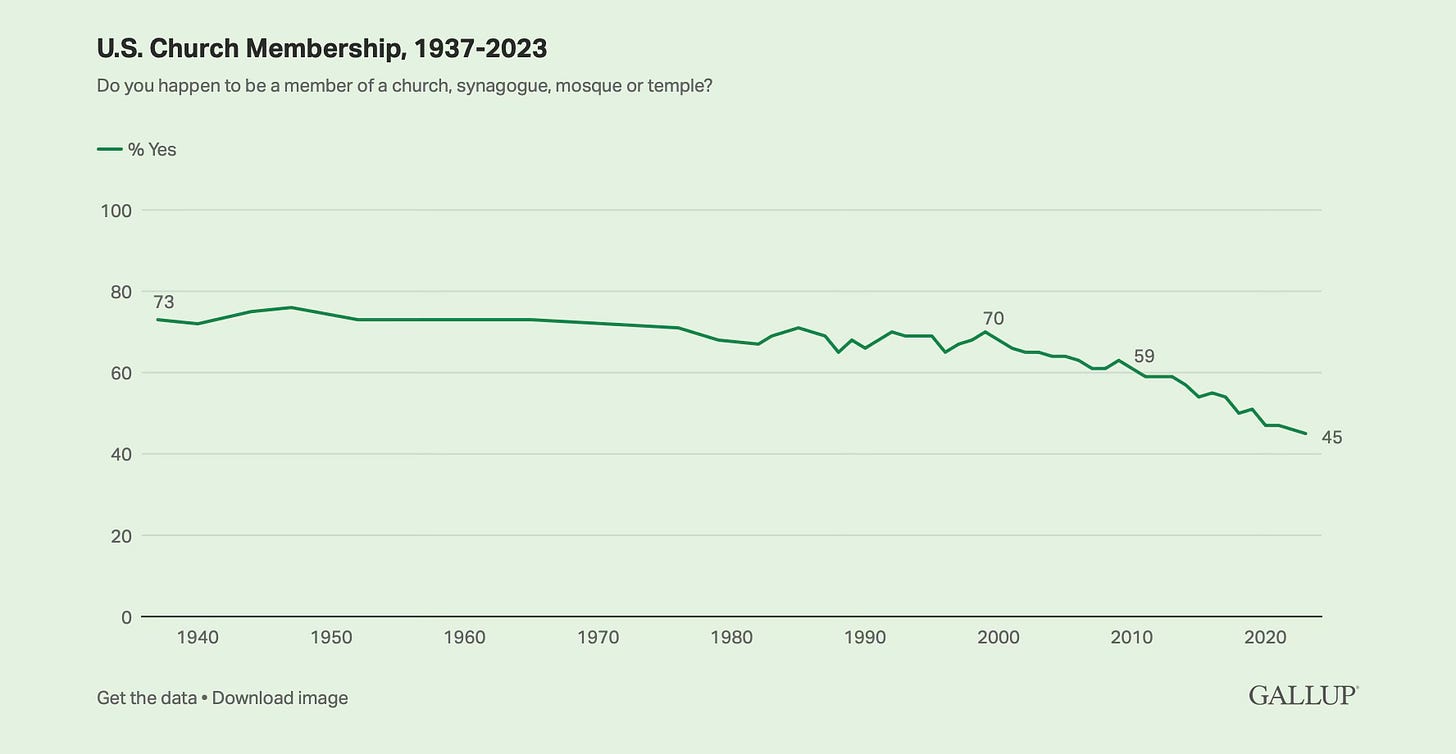
The crisis of faith… impacted by… money?
Did people leave their faiths because money is easy to create (which allows the individual to take on more debt, by the way)? I have two summarized explanation attempts for this correlation for you, one spiritual and one practical:
Spiritual: The incentives of easy money tempt us to focus on spending now instead of saving for the future. This is more about what comes before one’s action.
Practical: “Printing money” makes funding bad things easier. This is more about the act, then loops back into the spiritual because it’s possible to fund whatever.
For more detail on both of these, enjoy our course, where we teach seven effects of printing money that violate or impede Catholic Social Teaching, sourced from Catholic economist Guido Hülsmann’s book, The Ethics of Money Production.
The seventh effect, by the way, is “spiritual disorientation.” We’ll get back to this in a moment.
How does Bitcoin stop money creation?
Bitcoin’s predetermined finite supply of 21,000,000 bitcoin makes money printing impossible, if people agree to using Bitcoin. You can “print money” by changing lines of code in the Bitcoin program, but once you do, what you’re using ceases to be Bitcoin. This social consensus on money supply is solid because of game theory (a new field in economics extensively developed in the 1950s).
This short Bitcoin video from Angel Studios, featured in our 1-hour course, explains:
Bitcoiners have hope that Bitcoin is likely to continue its steady adoption. And once adoption is sufficient, the mere existence of Bitcoin as a trusted option in the market for money will prevent governments and central banks from printing money, if they don’t adopt it as their chosen money themselves.
The root problem with conventional currency is all the trust that's required to make it work. The central bank must be trusted not to debase the currency, but the history of fiat currencies is full of breaches of that trust. —Satoshi Nakamoto, inventor of Bitcoin
Back to the spiritual—it’s hard to explain
People have left the faith in droves. This is a historical fact. But because it is such a grave historical matter, it’s harder to explain because its cause is spiritual. I believe Hilaire Belloc when he writes:
In proportion as an historical matter is of import to human kind, in that proportion does it spring not from apparent—let alone material—causes, but from some hidden revolution in the human spirit. To pretend an examination of the secret springs whence the human mind is fed is futile. The greater the affair, the more directly does it proceed from unseen sources which the theologian may catalogue, the poet see in vision, the philosopher explain, but with which positive external history cannot deal, and which the mere historian cannot handle. It is the function of history to present the outward thing, as a witness might have seen it, and to show the reader as much as a spectator could have seen—illuminated indeed by a knowledge of the past—and a judgment drawn from known succeeding events. The historian answers the question, “What was?” this or that. To the question, “Why was it?” if it be in the spiritual order (as are all major things), the reader must attempt his own reply based upon other aptitudes than those of historic science.
In our course, we don’t catalogue the “spiritual disorientation” effect of printing money because it is so varied in the Body of Christ. Connecting that spiritual disorientation to the ultimate cause of one deciding not to practice their faith or believe in God is possible for an individual. There are also other factors at play—powers and principalities, etc. Apostasy is not easy to explain and not generalizable.
For example, in the past, I violated the First Commandment because I made my career my number one priority. Perhaps it was because I wanted a family and I knew nice, wealthy families. Why? My family moved to a city that had good opportunities for work. It was also a city with a big banking industry. Money is easier to make in the industries close to the central banks that decide where the newly created money goes first—this phenomenon is called the Cantillon Effect. Perhaps I wanted to be like those families, which led to a temptation to pursue career over God’s will, then combined with a lack of catechesis, perhaps I fell into idolatry and avarice, and as a consequence felt separated from God. That’s just one plausible pathway (I’m not even sure it’s true!) as to why I chose not to go to Mass and eventually stopped praying my evening prayers.
Spiritual disorientation does seem to comes with money printing. And the other six effects (including inflation, usury, and undermining the family unit) aren’t good things, and fortunately their dots are easier to connect to the source of our problem.
Learn more to discern the Bitcoin mission
Will fixing a broken money help fix our problems, material and spiritual?
Should you convert your fiat savings and investments to bitcoin to help?
I’ve said yes to both questions. I hold bitcoin. I’m excited for the future.
A scarce digital thing has only been possible since Bitcoin’s invention in 2009—that’s magnificent advancement for humanity not many realize. “The history of mankind is the history of money losing value,” says Milton Friedman. St. Thomas tells us austerely, “…it is necessary that money should have a fixed value.” With Bitcoin, we have a new hope for that. Please enjoy our course to learn more so you can decide if you want to join the Bitcoin mission as well.
P.S. I’m not the only one getting spiritual through Bitcoin
I was deeply involved in the Bitcoin community for 2-3 years. There are many people shedding their secular and materialist worldviews. Three Christian examples:
A Bitcoin exchange’s CEO shares his journey in his Jesus is a Bitcoiner talk.
A Christian Bitcoin conference had hundreds of attendees in 2024.
Co-founder of the Satoshi Nakamoto Institute and executive at the largest Bitcoin mining facility in North America returns to his Catholic faith and starts a Twitter apostolate.
That’s it for now. God bless!



